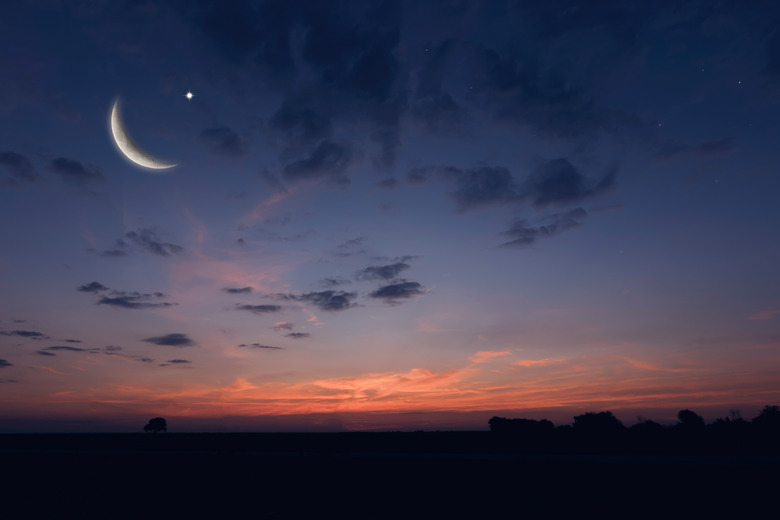Unless you’ve installed software that changes the way your operating system works, your computer tracks time using a solar calendar. This calendar is based on the sun’s movement, and it’s the one with which people are most familiar. It differs from lunar calendars that calculate months using the moon. Although methods used to measure months differ between these two calendars, they both can help you track time accurately and manage your life.
TL;DR (Too Long; Didn’t Read)
The difference between the lunar calendar and the solar calendar is the celestial body used to measure the passage of time. The lunar calendar uses the phases of the moon to measure time, usually measuring the time from new moon to new moon as one month. The time required for the Earth to rotate around the Sun is one solar year. The solar calendar typically measures the time between vernal equinoxes.
Astronomy and Calendars
Throughout history, people have used different types of calendars to help them know when to plant crops, choose the best hunting times, plan meetings and observe religious holidays. All calendars work by making it possible for you to organize time units by observing astronomical cycles. Months are based on the moon’s orbit around the Earth, years are based on Earth’s orbit around the sun and days measure the time as the Earth revolves once around its axis.
Solar Calendars and the Sun
Solar calendars, such as the Gregorian calendar, track time using tropical years. A tropical year, also called a solar year, measures the length of time between two vernal equinoxes. That time period is 365 days, five hours, 48 minutes and 46 seconds. Many people refer to a vernal equinox as the first day of spring. While most people use the Gregorian calendar, no U.S. law forces people to observe Gregorian solar calendar dates. The use of that calendar dates back to 1751 when the United Kingdom told its colonies to use the Gregorian calendar.
Lunar Phases and New Moons
A new moon is the opposite of a full moon. As the moon orbits the Earth, its position relative to the Earth and sun changes, and the moon appears to go through phases. When the Earth sits between the moon and sun, people on Earth see a full moon at night. A new moon occurs when the moon sits between the sun and the Earth. New moons occur during the day, so you can’t see them because of the sun’s brightness. A quarter moon, on the other hand, occurs when the moon completes 25 percent of its orbit around this planet.
Lunar Calendars
Because the moon circles the Earth in the same time it takes to rotate once, the moon always shows the same face to the Earth. That’s why you never see its far side. A new moon occurs every 29.5 days. Astronomers call the time between new moons a synodic month. All lunar calendars that people create base their months on the synodic month rather than the months you find on a solar calendar.

